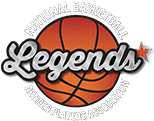The National Basketball Association, or NBA, is a professional basketball league comprised of 30 teams across North America featuring the best basketball players in the world. The NBA was founded on June 6, 1946 in New York City and was originally called the Basketball Association of America.The NBRPA works regularly with the NBA to collaborate on public events, community relations and former player transition programming. Since 2011, the NBA’s annual financial contribution to the NBRPA has increased nearly 50 percent. The NBRPA has also formed new key partnerships with the NBA Players Legacy Fund, which provides funding for former players in dire straits. The NBRPA has rebuilt its long-standing relationship with the National Basketball Players Association (NBPA), as shown by the organizations’ renewed interest in program partnerships. Both are committed to transparency and promoting the rights and achievements of Legends.
Legends Care Initiative
The NBRPA works with the NBA on the Legends Care initiative that positively impacts communities and youth through basketball. NBRPA Legends often partner with NBA Cares to give back through clinics, mentoring, charitable outreach and other grassroots initiatives in the United States and abroad with the goal of educating, inspiring and keeping youth active, healthy and safe.
G-League
In partnering with the NBA, the NBA’s Gatorade League (G-League) announced a new intensive externship exclusively for NBRPA members to immerse themselves into the business operations of the G-League. Members are able to work at the G-League Showcase and the G-League All-Star Weekend. The new initiative matches retired players with tangible opportunities to learn, develop and showcase their talents. Just as dozens of current NBA players began their professional careers in the G-League, so too have current NBA coaches, scouts, front office personnel, and broadcasters. This externship program gives participants an opportunity to jump start their transition after retirement, by gaining practical experience and networking with personnel from the NBA and the G-League in one of the following areas: Community Relations/PR, Event Management, Partner Hospitality, Broadcast Operations and Basketball Operations.
Assistant Coaches' Program
The NBA’s Assistant Coaches Program which takes place during the Portsmouth Invitational Tournament, NBA Combine and NBA G-League Tryout. The ACP provides participants the opportunity to sharpen their coaching skills through hands-on experience, coaching and basketball strategies, and to better prepare them for pursuit in their coaching and basketball endeavors. First implemented in 1988, this program has exposed over 150 qualified former players to GMs, coaches and NBA/ G- League team personnel as potential coaches, including many current NBRPA members.
On April 24, 1996, women’s basketball announced “We Got Next” as the NBA Board of Governors approved the concept of a Women’s National Basketball Association (WNBA) to begin play in June 1997. Since then, the WNBA has been the home for the best women’s basketball talent in the world. The WNBA is a professional basketball league comprised of 12 teams featuring the best women’s basketball players in the world.
Working directly with the WNBA league office and WNBA Players Association, the NBRPA actively seeks partners that can assist in creating female-oriented programs specifically designed to help former WNBA players in life after the game. In addition, the NBRPA is dedicating a significant amount of its community resources toward impacting young females through basketball
The first player signings were announced on October 23, 1996, with Sheryl Swoopes and Rebecca Lobo joining the league. The duo were soon followed by Ruthie Bolton, Lisa Leslie, Cynthia Cooper, Michele Timms (the first international player) and many more WNBA hopefuls. Eight teams were announced for the league’s inaugural season. The Eastern Conference consisted of the Charlotte Sting, Cleveland Rockers, Houston Comets and New York Liberty while the Western Conference was comprised of the Los Angeles Sparks, Phoenix Mercury, Sacramento Monarchs and Utah Starzz. On January 16, 1997, the first 16 players were assigned to teams, and on February 27 an Elite Draft added two more players to each team, increasing team rosters to four. The Comets selected Tina Thompson, the Pac-10 Conference’s leading scorer, with the first pick of the Inaugural WNBA Draft. Margo Dydek, a 7-2 center from Poland, was selected first in the 1998 Draft by the Starzz, and two-time Associated Press Women’s Basketball Player of the Year Chamique Holdsclaw was the Washington Mystics’ No. 1 selection in the 1999 Draft. In 2000, the Cleveland Rockers selected Ann Wauters from Belgium as the first overall pick, and Australian Olympian Lauren Jackson went to the Seattle Storm with the No. 1 selection in 2001.
Since the inaugural season, the WNBA has expanded from eight teams to 16, with the Detroit Shock and Washington Mystics joining the league in 1998, the Minnesota Lynx and Orlando Miracle in 1999, and the Indiana Fever, Miami Sol, Portland Fire and Seattle Storm in 2000. The 2002 season will see 176 women play professional basketball in 256 regular-season WNBA games (schedule history: 32 games in 2001, 2000 and 1999, 30 in 1998, 28 in 1997). With such tremendous growth, the WNBA and the Women’s National Basketball Players Association (WNBPA) announced on April 29, 1999 the league’s first collective bargaining agreement – a first of its kind in women’s team sports.






